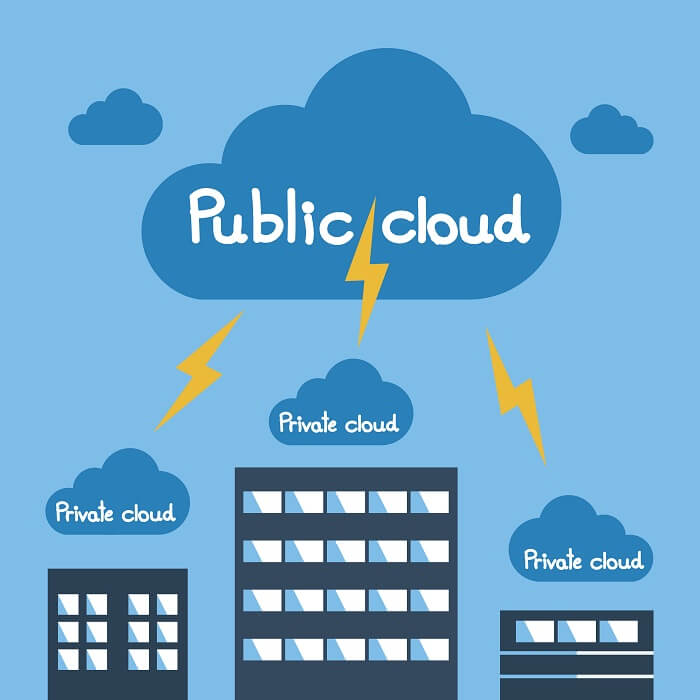Jason Lopez: Well, on this as a service theme, it seems like, you know, there's a big demand for hybrid multi-cloud.And in the sense of, uh, cloud as a service, but wanting the tools to achieve that scale of hybrid multi-cloud, is that a trend that you're also seeing?
Sridhar Mullapudi: Yeah, we've, we've started seeing this trend, I would say seven, eight years since AWS started. But what happened was the pandemic happened so suddenly everybody had to work from home and there was just not enough time or capacity for them to build this infrastructure by themselves or hire people or buy hardware, anything else. So they're like, "Hey look, I want to tap into the cloud for flexibility and other stuff." So now customers are like, "look, I never want to be in that situation."So now they're investing in infrastructure, they want to have a hybrid market by cloud. I think some of the recent trends where customers are saying like, "I also want to use my spend on cloud just because the market conditions are changing, the economic times are changing." So I think we'll come back to an equilibrium where they want that flexibility. "Hey, for certain use cases and workloads, I want to put it in my data centers or private clouds. I think that's most, and some I want to use public and I want that flexibility back and forth." I think now there's a little bit of normalization and people understand, but I don't want to get locked into any single cloud. I want to have that flexibility. So now they're coming to their partners like Citrix and Nutanix as well to say like, "Hey, how do you provide that hybrid multi-cloud solution? Give optionality, don't lock me into a single cloud provider and have that flexibility and choice." So customers want that choice more.
Jason Lopez: Right. And so choice, on that idea of having options if they're running in the public cloud, are you seeing them move from one public cloud to the next?
Sridhar Mullapudi: Yeah, I think a few things are happening there. One, if they're a pure data center, kind of a private cloud type of a customer doing it themselves and their data centers or maybe cos their strengths were like, "look, I don't want to be in the data center business and I want to use uh, somebody else data center, public cloud, kind of a data center." So that trend has been going on for a while. I think second, they also understand the power of these clouds and the relationships they have whether it's, you know, Azure or Google Cloud or AWS or others and they don't want to get locked in. The move away from a data centerIthink is driving the hybrid discussion. The move to adopt multiple clouds for flexibility, and best-of-breed solutions, is driving a multi-cloud discussion. And I think that's creating opportunities for vendors like Citrix and Nutanix because they look at it and say, "Hey look, I don't want to triple my operational complexity if I have one here, another cloud, and others. So like I would rather have that flexibility without paying the cost." So that's where they look at hybrid multi-cloud vendors and how they can help.
Jason Lopez: Well, just one more question, and this one looking to the future. On that idea of being able to work from anywhere, you know, where we started our discussion, what are the challenges that still remain in your estimation?
Sridhar Mullapudi: If there was one thing the pandemic kind of showed us that I think we made, you know, quite a big progress in technology evolution, whether it's bandwidth service, availability device and everything else. For us to actually collaborate sometimes jokingly say "if covid happened 20 years ago, we all probably would've been screwed because, you know, there was not a lot of tech stack to actually help us collaborate." Citrix always talked about this notion of work is not a place, work is what you do. And we believe in providing those tool sets and infrastructure so people can work from anywhere, right? I mean, you know, we pioneered the delivery of, you know, applications way back in the day we did GoToMeeting, I mean now we have Zoom, you know, and a bunch of other tools as well. So we always believed in that model. I think both in terms of infrastructure, whether it's device or network or applications and everything else. Now we are a little bit more hybrid. I do believe innovation drives growth and value and sometimes you've got to figure out how to bring people together and so I think hybrid becomes very important. What does that hybrid experience look like, right? I think past two years we are all remote. If you're all remote, I think you all feel equal when you're in the office, when you're remote, you know, you might feel collaboration is challenging. So I think there are some technical hurdles there, probably social, personal and that kind of thing as well. So I'm sure there are the next 10 years of innovation ahead of us to really make the hybrid work like you are in person.
Jason Lopez: Sridhar Mullapudi is the general manager of the Citrix Business Unit in the Cloud Software Group. He's been with Citrix since 2001. This is the Tech Barometer podcast. I'm Jason Lopez. Tech Barometer is produced by the Forecast, a publication of Nutanix. Check us out for other stories on technology and the people in tech at theforecastbynutanix.com.






